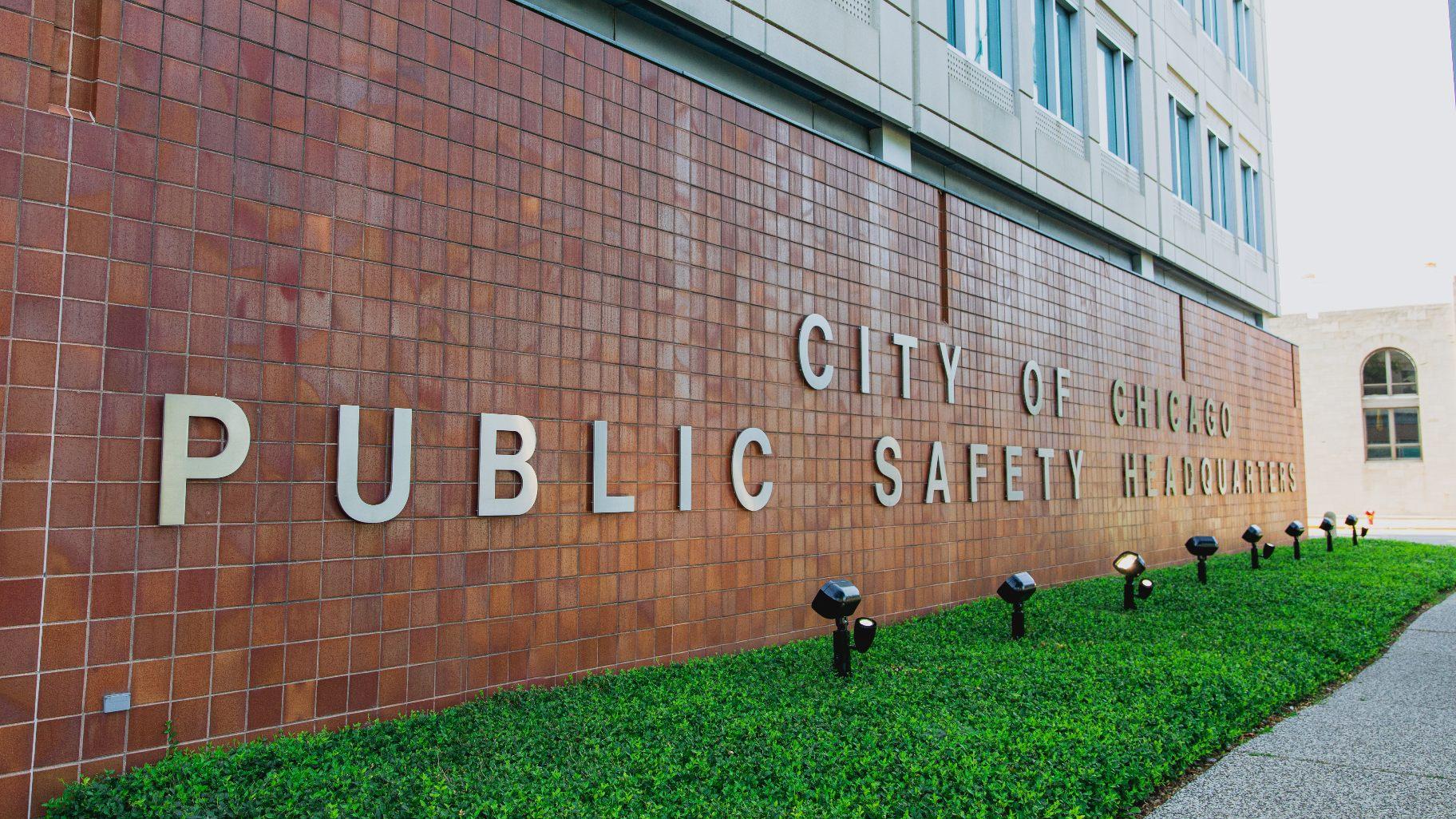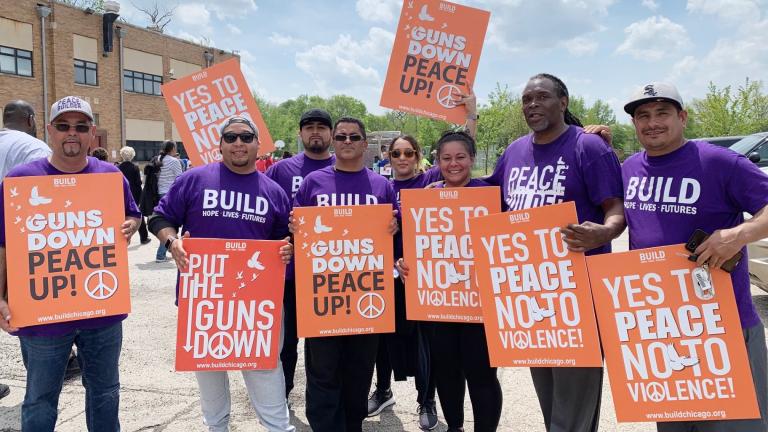 (Michael Izquierdo / WTTW News)
(Michael Izquierdo / WTTW News)
On an almost daily basis, commentators and politicians compare crime in cities and states to one another. Homicide numbers and crime trends become talking points that are discussed without considering the influences driving those numbers.
When it comes to Chicago, the national narrative often focuses on the murder count. While the sum of murders in Chicago is an important metric, it’s also important to take into account the other influences driving those numbers like population, density, gun laws, policies, geography and economics when considering how it compares to other places or timeframes.
Further complicating national comparisons, all crime isn’t reported, and when it is, it isn’t reported identically across local agencies.
A Voluntary System
Structural issues with how crime data is reported can make it difficult to compare cities to one another.
While the more widely adopted federal system aims to improve the quality of how crime is reported, the transition hasn’t been without issue.
For instance, there were gaps in information following the transition to the National Incident Based Reporting System, known as NIBRS, because early responses from local agencies were spotty when compared to its predecessor, reports said.
Many agencies were slow to adopt the new federal system, if they signed on at all, creating barriers to compare data across years or to estimate figures for some states.
“The very first thing we need to understand is this is not designed to be a mandatory, accurate reporting system,” said Adam Wandt, assistant professor at John Jay College of Criminal Justice. “This is a voluntary system that helps us understand the general state of crime in the nation.”
The Federal Bureau of Investigation has tracked crime data at some agencies since 1930. It is challenging to get full participation in a voluntary system from more than 18,000 city, higher education, county, state, tribal and federal law enforcement agencies operating under various regulations, experts said.
The definitions of crime in New Jersey aren’t identical to those in Illinois. Criminal codes are updated regularly, and it takes time to get agencies on the same page counting crime. Every crime isn’t classified perfectly from the first police report to the final submission to the FBI.
The NIBRS system is supposed to count all crimes in an incident, rather than just the top charge as was done by the past system. However, a lot of crime is still missed, including those that go unreported.
Many Crimes Aren’t Reported At All
A recent report on the National Crime Victimization Survey from the Bureau of Justice Statistics said, “Victims may not report a crime for a variety of reasons, including fear of reprisal or getting the offender in trouble, believing that police would not or could not do anything to help, and believing the crime to be a personal issue or too trivial to report.”
Homicides can be tracked through medical examiners’ offices and other sources, allowing these figures to be verified independently. It’s more difficult to substantiate other violent or property crimes, experts said. The NCVS survey estimated the crime with the highest reporting rate was motor vehicle theft at 76.9%.
Violent crime was reported by victims at a rate of 45.6% in the 2021 survey period. Rape and sexual assault were reported in 21.5% of victimizations. Property crime was disclosed at an even lower rate.
Michael Walker, a professor at Passaic County Community College in New Jersey, saw that gap in reporting illustrated when guest speaking to a class with a large population of students speaking English as a second language.
He asked the class if anybody had been the victim of crime, and a woman in the back raised her hand.
“She says, ‘Every day, my sister and I, coming to school, we get robbed,’” Walker recalled. “I said, do you call the police? She goes, ‘No. We’re undocumented immigrants and we’re afraid we will get deported.’”
These gaps in reporting worry Walker, a former police officer who has been a member of the FBI Criminal Justice Information Services UCR subcommittee for 17 years, from a public safety perspective.
“That’s a big problem,” Walker said. “Those victims can be preyed on forever, as the offender knows that they’re not going to report it to the police.”
Some departments refuse to take reports on specific crimes, another influence impacting counts, Wandt said. Some categories of crime are not counted by the FBI data program, Wandt said, making certain types of analysis difficult.
Theories Constantly Change
Violent crime often receives the most focus in Chicago. Murders rose dramatically during the pandemic locally and nationally. The total is down about 8% year-to-date compared to the previous year as of Aug. 28, according to data from the Chicago Police Department.
A recent report from the Council on Criminal Justice found homicide and most other violent crimes declined in American cities in the first half of 2023, but remain above levels seen before the onset of the coronavirus pandemic.
Crime rates can vary greatly from neighborhood to neighborhood, though federal numbers are measured at a citywide level.
The city murder total in 2021 was as high as it has been since the 1990s. Chicago sits atop the pile for murders in the U.S. for most recent years.
Chicago is also the third largest city in the United States. A higher population statistically means there are more people living there and visiting who can be murdered, helping explain why, since 1985, only Chicago, New York City and Los Angeles have led the nation in murders, according to Pew Research.
To address the population factor, researchers often analyze municipalities by a murder rate, making things more comparable as if each city had the same number of residents.
When rates are normalized in this way, cities like St. Louis, Baltimore and Detroit often have higher murder rates than Chicago.
Researchers still believe those rates must be analyzed carefully, even though they provide greater nuance than totals.
“The biggest problem is when people try to compare crime across jurisdictions, and they don’t norm for a population,” Walker said. “They don’t norm for other issues that might be a problem, like density of population, income levels or education levels.”
Some research has connected high-density housing to higher levels of violent crime.
Issues with out-of-context murder rate data can be illustrated in Chicago by comparing it to outlier municipalities. The latest national data for the state through the FBI program, as in previous years, allows for the murder rate to be normalized between cities in Illinois.
Chicago does not have the highest murder rate in the area. That distinction, according to 2021 data, goes to Elwood, whose rate was 15 points higher than the one in Chicago.
The rural Will County village is hardly the first municipality to come to mind when thinking about violent crime. The reason is simple: This was Elwood’s first murder since 2009, according to media reports, and the only one that year.
The village population around 2,200 elevates the figure for Elwood, illustrating how the rate can also be an imperfect measure when it lacks context.
Another commonly cited crime statistic is violent crime, defined by the FBI as murder and nonnegligent manslaughter, rape, robbery and aggravated assault. These crimes are grouped as a category, allowing researchers to compare crime year-to-year in municipalities and across geographies.
Violent crime can also be normalized by population. Chicago finished below the rate of Rockford and Peoria among the largest cities in Illinois in 2022, according to records from each department.
Peoria Police Department spokesperson Semone Roth said it is important to take two factors into account when looking at the increase in violent crime between 2021 and 2022. First, the rise can be tied to the end of the lockdown during the pandemic, Roth said.
Roth also attributed part of the small rise in crime data in Peoria to the broader reporting required by the NIBRS system in 2022.
The difference in murders in the two municipalities also needs to be taken in context, Roth said.
Chicago reported 695 murders in 2022, while Peoria saw 24, according to records and interviews.
“In comparison, Chicago reported more murders in 2022 than Peoria has had in the last 20 years,” Roth said.
Much like in Chicago, guns are a driving factor in violent crime in Peoria, Roth said, though the central Illinois city saw a 28% decrease in shooting incidents in 2022.
The Peoria Police Department uses crime data to project officer staffing per shift and district, and regularly meets to identify trends to develop strategy, Roth said, practices used by most modern police forces.
While local agencies use their own data to inform their decisions, interpreting crime data on a larger scale requires an intricate understanding of laws, policies, history and geography.
The top minds in criminal justice continue to research and debate what these statistics mean, and they remain undecided on how best to interpret them.
“This is still a mystery to me,” Wandt said about interpreting crime data. “The deeper we delve into the mystery of crime statistics, we realize that our theories are constantly changing, and we have more and more theories to help explain what we’re seeing.”
Contact Jared Rutecki: @JaredRutecki | [email protected]








